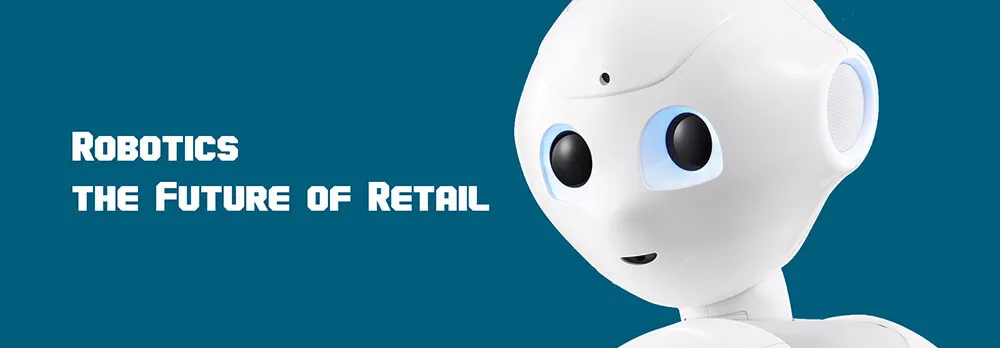Power BI Report Server: Key Features and Elements
Every CTO knows the struggle of managing complex reports. The inefficiency of scattered data, the constant juggling between reporting tools, the challenge of ensuring accurate KPIs...
iFour Team - May 05, 2017
Listening is fun too.
Straighten your back and cherish with coffee - PLAY !

In this era of technological advancement, almost everything has been automated with the help from software development companies. Robotics is considered to be the next thing that will take over all the industries.
One such industry where robotics has already made its marks is the retail industry. There have been many companies that have successfully started implementing robots in place of humans and many others are testing robots for implementation.
In this article, we will see as how robotics is required in the retail industry and how efficiently does it turn around the retail industry. We will also take a look at the ever discussed issue of human versus robot.
The main advantage that stores have compared to online retail is the presence of employees. People go to stores to be able to touch and feel the products they want to buy and employees of those stores help them in properly identifying their choice of products. It is true that most retailers have taken too many employees out of stores, leaving customers to serve themselves. But if there is no one to help the customers, it would be better to stay back at home and shop online.
Well this dilemma can be understood when we say that more and more shops are getting automated by the day through robotics which allow retail owners to use lesser manual work and use more machines to do their work in an efficient way by saving way more time than before.
Various top notch retail companies like shipping, warehouse and storage have already started using robots to remain ahead of their competition. According to an article by Business Insider, Chloe is a robot that retrieves products that customers request from a kiosk and is being used by Best Buy. Target began a trial of Tally, a robot that travels through aisles and takes inventory.
Robots have also been used in warehouses as well. An article by Bloomberg technology says that Amazon is using 30,000 robots in its warehouses all over the globe.
Starship is one more robot which is being tested for delivering products to the doorsteps of the consumers.
In the current era, robots are taken to interact with customers, owners, managers and co-workers. The most common use of robots in retail is online where robotics is used in customer services. These conversational interfaces are able to handle very complex queries in a short period of time.
Also in the shop floor, robot employees can directly fetch the products to the customer’s hands. This improves efficiency as unlike a human worker, a robot does not need breaks and hence can monitor the store continuously.
In warehouses, robots are able to handle delicate packages, fragile items and even sew entire pieces if clothing better than any human and in lesser time.
Unlike humans, delivery robots find it much easier to locate an address which increases the efficiency in the shipment process.
Robots involved in inventory management require no time to keep a track of the inventory. It can tell if an item has been wrongly priced or kept at a wrong place better than most humans.
Most of our transactions today in retail have become automated with the help of technology and software development companies. But the question is if there is really no need of humans if robots come. Well, most researches show that the answer to this question depends on many factors. For example, the type of product would determine whether a customer would want to interact with a robot or a person. Whereas there are many cases in which the customer needs help and does not bother from where it comes-robot or a human.
But still, experts say that all customers would want to interact with people over robots in majority cases. Business-wise it is also true that when the stakes are high, human input is much more important. For matters where a consult is required, humans are always more preferred.

Every CTO knows the struggle of managing complex reports. The inefficiency of scattered data, the constant juggling between reporting tools, the challenge of ensuring accurate KPIs...

The very first reason why you should implement Row Level Security is to foster trust, a crucial element for any business's success. Next, it reduces data clutter and helps you load...

The performance of Power BI is significantly influenced by two essential factors: design consistency and the rapid loading of BI elements. This holds true whether you choose Tableau...